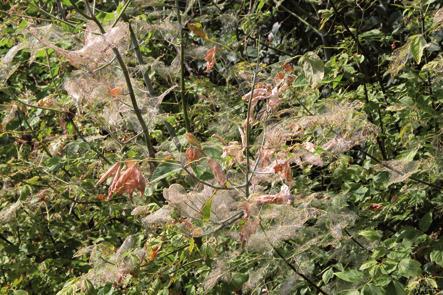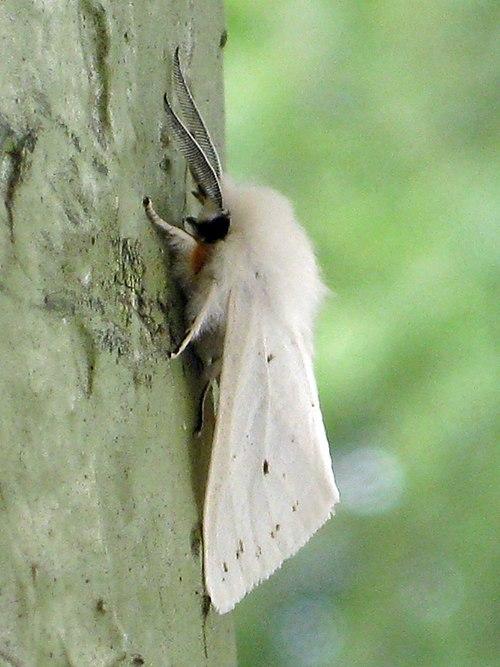by Ilse Gebhard, KAWO member
While the Eastern tent (Malacosoma americanum) caterpillars spin their webs in spring, the fall webworm (Hyphantria cunea) caterpillars spin their messy webs in leaves and branches of their host trees in late summer or fall. By then the webs of the tent caterpillar have broken down and disappeared, battered by wind and rain and picked apart by birds looking for a meal.

Fall webworm nests have been found on more than 400 tree and shrub species. They are much bigger than the ones from the tent caterpillars and can enshroud whole branches or even entire trees. The caterpillars feed communally inside the webs and David L. Wagner in Caterpillars of Eastern North America states that when disturbed, the larva often wag in unison, providing a curious collective display.
Heavy feeding in summer can damage the host trees but with light or fall feeding the harm to trees is minimized as photosynthesis has largely stopped and the nutrients are stored in the roots for next year’s growth. The leaves will just fall off soon anyway.
By spring the webs have broken down for much the same reasons as those of the tent caterpillar. I’m sure many bird species predate the webs, but once the leaves have fallen off, the birds I see most often poke around in the webs are titmice. Parasitic flies and wasps also find the caterpillars irresistible as more than 50 species are known to parasitize and kill them.
The color of the fall webworm caterpillar is highly variable ranging from pale yellow, to green to charcoal, with an abundance of long, silky hairs called setae, which can be white to yellow. Most setae clusters have at least one very long seta twice to three times the length of the others. In most color forms a cream subdorsal stripe borders the darker area on the middle of the back.


A second more developed stripe runs below the spiracles, which are white. The spiracles are external openings on the sides of the caterpillar that allow gas exchange, namely breathing. The bumps, called setal warts, from which the setae arise are black on the middle of the back and the ones above and below the spiracles are usually yellow or orange.
The fall webworm overwinters at the pupae stage and the moth emerges in spring or summer. In the north its wings and abdomen are white, while in the south the forewings and abdomen can show grayish brown spots. With a wingspan of 1 to 1.5 inches, it is one of our medium sized moths.
